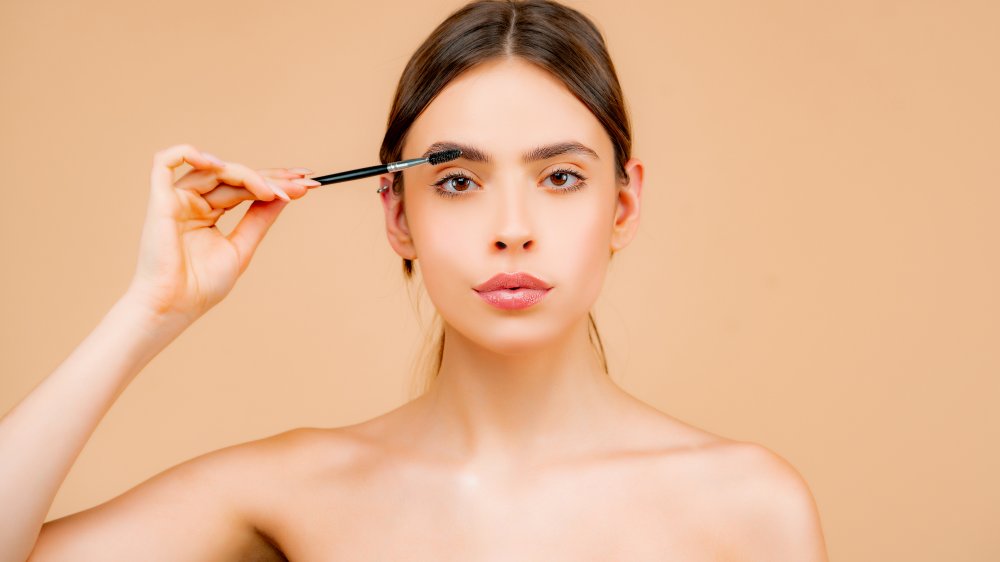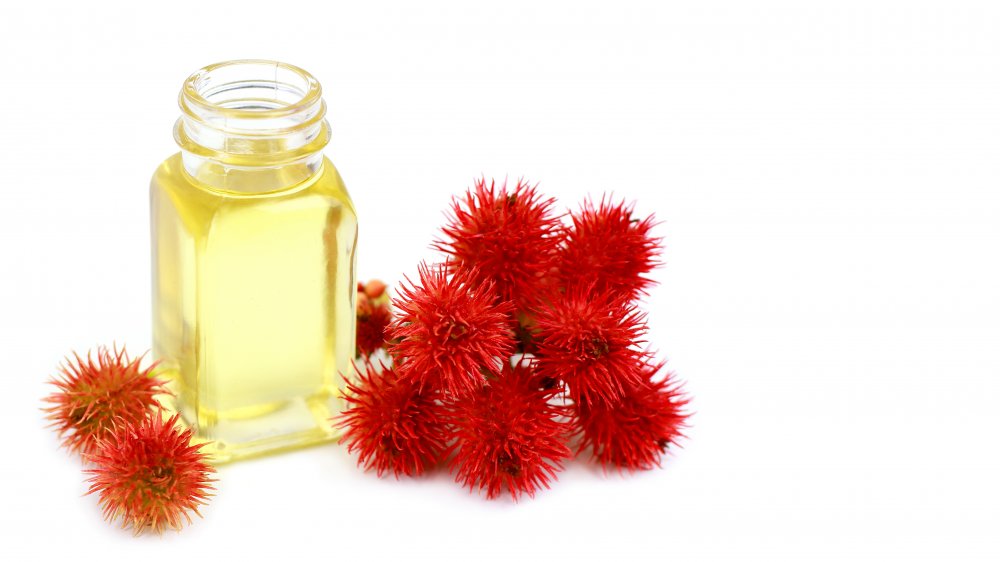What Happens When You Put Castor Oil On Your Eyebrows Every Day?
If you're keen on finding the DIY solution to absolutely everything, from home improvement to skincare, you may well have heard the trend of using castor oil to grow your eyebrows. According to New York-based dermatologist Dr. Doris Day, "Castor oil contains a high percentage of ricinoleic acid, which is an omega-9 essential fatty acid." Speaking to Refinery29, she explained, "This can help as an anti-inflammatory and improve circulation, which may help with hair growth."
And some people truly believe this, and that makes it a popular suggestion for those who are looking to get their eyebrows to grow. But does castor oil really make your eyebrow hair grow? What happens when you put castor oil on your eyebrows every day?
Jamé Heskett, holistic doctor and author of The Well Path, believes there are many benefits to castor oil — but does not list hair growth as one of them. "Castor oil is a triglyceride fatty acid from the beans of the castor bean plant," she told Byrdie. "It's a unique TGFA called ricinoleic acid, which is fairly rare in the plant kingdom."
However, as Dr. Joshua Zeichner, dermatologist and director of cosmetic and clinical research in dermatology at Mt. Sinai Hospital in New York City, puts it, "Just because something is natural doesn't mean it's without side effects."
Castor oil can actually cause hair loss
While Day believes castor oil may help hair growth, she is quick to point out that it's yet to be proven, and, more importantly, that there could be some serious side effects if you use it on your brows regularly. "There is no scientific or published evidence regarding castor oil and hair growth," she told Refinery29. "Also, it can be occlusive, which can increase hair loss." Yikes! As Byrdie reports, Marie Claire writer Sherri Soliman has experienced this firsthand.
In addition to causing hair loss, castor oil also has the potential to aggravate your skin. So if you're happy to take the risk and are still keen on trying this DIY trick, you should do so with caution. "It might be helpful to apply to one brow to see if it works and to check for irritation," advised Day. "No point in irritating both brows for no reason."

